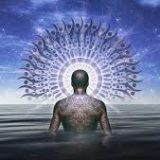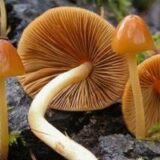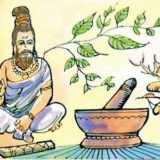Table of Contents
Which Hallucinogens are Most Important?
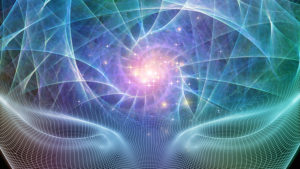
Most Valuable Hallucinogens to Ancient and Modern Cultures
Ancient cultures have used hallucinogens for as far back as documentation and storytelling goes. Some cultures employed hallucinogens more than others, and some use them much differently than others. Although there are many hallucinogens (and many more which have not yet been discovered), there are a few which have been far more valuable and important than others. Sometimes they are more important because they have had more cultural use insignificance. Sometimes they are more important because they are worth more money and have become a cultivated commodity at some point in history (or even still today). And other times they are important for the effects that they offer, or insight they provide. Whether the herb is important to everyone or important to one culture, the MOST important hallucinogens overall are worth noting.
List of Important Hallucinogens
No matter if the plant is important for its special botanical or chemical properties, its religious use, or its monetary value, all of the most important hallucinogens are worth detailing. Here are the most important hallucinogens known to man to date.
Amanita Fly Agaric Mushrooms
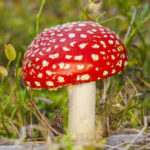
The drink heavily enjoyed for thousands of years throughout South America and Mexico alike known as Soma, was most traditionally made using Amanita Fly Agaric mushrooms. Technically this was not well known information until the late 1960s after a number of researches on the drink proved that the psychoactive effects could be attributed to the mushrooms. There were often extremely intricate ceremonies and rituals surrounding the mushroom whether it work consumed in the drink, by itself, or through another preparation. Many of the rituals even involved elaborate costumes.
Despite the fact that it was not until 1968 that the psychoactive ingredient in Soma were to be traced back to Fly Agaric, it had been well-known even as far back as the 1700s to researchers that the mushrooms themselves were hallucinogenic. And the natives of the regions where the mushrooms are found have almost always known of their psychedelic ability. There are many stories surrounding Amanita mushrooms which attribute their existence and the effects they have upon consumption to the Gods. There are also many stories surrounding the actual consumption of the magic mushrooms. Even in older cultures, writings can be found describing how users of Amanita will sit quietly and ponder, have visions or intense dreams, and even fall into shamanic trances and dances.
“Hexing” Henbanes and Nightshades
Sometimes known as the “Hexing Herbs”, many species of nightshades and henbane plants have provided spiritual and religious uses throughout history typically of a darker sort. Although many of them are still hallucinogenic, they can often be associated with very negative effects of a variety of sorts. Some plants may provide a short-term hallucination that shamans use as a vision, to spirit walk, to dream or for other prosthetic ability… In exchange for one of the most horrendous hangovers man could experience. Some other hallucinogens do not provide any vision at all, however, have been used in a variety of witchcraft (including hexing itself). There are some species of henbane and nightshade which shamans use to talk to the dead or communicate with their ancestors.
Of the many darker uses associated with the hexing herbs, some of the worst include poisoning, psychiatric breakdowns (psychosis and delirium), and cursing. Because of these unwanted fates, if someone of older, or medieval times were to find a mandrake root or one of the other hexing herbs a round their property, etc., it would strike fear in their heart. Most people of older times were scared of these herbs due to their general associations and known uses.
Regardless of how they were used or thought of, these hexing herbs provide a number of psychoactive effects. The hallucinations may be scarier with some of the herbs, but nonetheless the herbs are still important hallucinogens within the cultures which use them. The most important hexing herbs include: Deadly Nightshade (atropa), Yellow Henbane (hyoscyamus albus), Black Henbane (hyoscyamus niger), and Mandrake (mandragora). These herbs are well known to have been used all the way back as far as written history, probably further. Famously Dioscorides (a famed Greek herbalist) received Mandrake from the goddess of discovery, Heuresis. Like many of the hallucinogens, it was believed that mandrake and its fellow hexing herbs, were plants of the Gods.
Cannabis and Hemp, The Sweetest Nectar
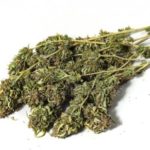
Cannabis may have originally been native to only a few areas of the planet, however, today cannabis has been spread, cultivated and now grows nearly everywhere around the world. There are many stories and folklore surrounding where cannabis came from. Ancient India advises that cannabis was sent to man from the gods specifically for delight, courage and heightened sexual desires. In other words, it is believed the gods provided cannabis as a natural aphrodisiac and for recreational relaxation. The story gets a little deeper in that the cannabis was a result of the gods fighting with demons over parts of the Earth…however, the bottom line is that cannabis is the gift of ‘victory’ and is meant to bestow special powers onto men whom consume it. India culture consecrates a drink they call “Shiva” which contains hemp.
In parts of India and Africa, cannabis is believed to be able to give man great visions of the gods and there will. Many cultures also believe that cannabis brings good health. It has had many religious uses all throughout ancient times… And is also used religiously today (both in religion and in recreation). There are instances of cannabis being used throughout all of written history. The Romans and the Greeks alike, both wrote about cannabis and its effects. While it was less often used for its psychoactive properties back then, there were the occasional parties by which cannabis played a major part. They sometimes mixed it with wine and beers to produce visionary, trance-like states. They gave it to guests as a gift for enjoyment. And they began eating it before Christ (edible form with psychoactive properties). While modern varieties of intake do not create hallucinations, there have been numerous concoctions and preparations throughout the years which absolutely have created visions, dreams, and hallucinations. Cannabis is one of, if not the most important hallucinogenic-psychoactive plant of them all.
Ergot of Rye – A Greek and Medieval Hallucinogen
Technically, Ergot is a fungus. It infects plants, and is specifically well known for infecting Rye…hence the nickname “Ergot of Rye.” The chemical composition of Ergot allows for indole alkaloids which are all derived from lysergic acid. It has also been known as St Anthony’s Fire. The man behind the story, St Anthony, was an Egyptian who lived to be 105, dying in 365 A.D.. St. Anthony is the protector against fire, infection and epilepsy. Although he died a religious hermit, he was buried in France. Basically a mix up, by which he were given credit for a random feet of luck gave this fungi his name, as a kind gesture of reward in his remembrance. Bottom line, Ergot has been a highly regarded hallucinogen and most people believed that St. Anthony saved the day up until it was proven in 1676 that the real cause of ergotism was discovered. Ergot remains an important herb, historically reconfiguring the way people thought, eat, and interacted with agriculture.
The Datura Plants
Sometimes Datura is referred to as the “Holy Flower” or “North Star Flower,” although the different species have many different names and nicknames. They grow in different regions of the world and in a variety of climates. They look a variety of ways, many of them very exotic and beautiful in design. Many of them look attractive enough to consume or cultivate for decorative purposes. They have a long history of being used by herbalists and medicine people for so many things. Many cultures of India associate Datura with intoxication and call it drunkard, mad man, and even fool-maker. It is very frequently combined with alcoholic drinks to enhance the inebriating effects. It is played a huge part in Asian medicine. It has been used as an aphrodisiac in the East Indies. Even the Greeks understood that consuming the plant could lead to mental insanity in large quantities. Tanzanian cultures crafted a beer using Datura. In many parts of Africa Datura is smoked. Ancient Aztecs knew it as the ‘inclined head’, or the “nodding” fruit…insinuating it would make one nod their head in inebriation.
There are a lot of cultures which use Datura in religious rituals. Some shaman use Datura for inducing trances. Others proclaim it enhances dreams. There are some religious rituals that employ Datura to create extremely visual hallucinations. In China and many other parts of the Old World, Datura is regarded as a sacred plant. Many parts of Mexico know Datura for its ceremonial use, a sort of magico-religious way ancestors could cleanse their soul or “spirit walk.” Datura was an important religious plant in many North American Indian tribes, being used to create hallucinations for prophetic purposes.
Datura can be a beautiful genus of plants, however, they have often been associated with some more serious ill-fated effects. Some stories involving some species of Datura are so severe they almost wiped out entire colonies of peoples. One instance of this in particular was recorded in Jamestown, Virginia, when one of the new colonies of the New World all became sick. The colony was starving and the little green fruits (from Datura stramonium) looked healthy and safe to consume. Unfortunately, most of them became sick, many of them hallucinated and some of them even died. There are many other instances of this occurring with a variety of the Datura plants.
Iboga Drug of Sorcery
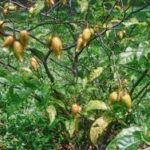
There are many plants that have been used throughout ancient times, and many of them come from South America. Iboga has been one of the most important hallucinogens of all time, both to the ancestors and to the people of a number of cultures. It is a powerful plant which can sometimes be over used to the point of fatality. Though, it is sometimes required for an inductee to be able to join a particular group or obtain a particular status. The hallucinations can be very powerful and are often accompanied by strong stimulation of the central nervous system. There are a number of medicinal uses, such as reducing the effects of opioid withdrawal. It is very commonly used in celebrations as an intoxicant, and is well known in the social sphere of being a “party favor”. Iboga can be found in many tribal dances.
Iboga is important in a number of religious and ceremonial rituals. Sorcerers and shaman alike have uses for the plant which range from seeking information to communicating with the spirit world. It is very common for elders and shaman to consume or otherwise administer the drug in order to receive advice or visions from their ancestors.
Yopo Beans of Shaman Snuff
Anadenanthera, or “Yopo”, is believed to have supernatural powers that give man the ability to contact and communicate with spirits of other worlds. The Indians of many cultures believed that Yopo could allow shaman to get information from supernatural beings. No one is quite sure how long Yopo has been used in a ceremonial format for its hallucinogenic properties, but the earliest documentation goes back to a Spanish report in 1496 detailing it being used as a powder called Cohoba. The people who took the snuff that was created from the Yopo beans saw extreme visual hallucinations including the entire room turning upside down in front of them.
Unfortunately, despite the fact that the Sun created Yopo in order for Indians to have positive communications with the other world, evil will always work its way in. Some believe that Yopo allows people to communicate with the devil and his demons. These devilish encounters are most certainly a way of explaining the bad trips that people have when overdoing the drug. As it turns out Yopo beans contain powerful active principles. It turns out that there is a lot of DMT in the Yopo snuff, so it makes a lot of sense that hallucinations ensue post consumption. Some of the Indians would become psychotically addicted to the powder – snuff substance. And in many cultures the Indians would become angry and violent after sniffing too much of the nasal intoxicant. These furious Indians would often be quick to take up arms and fight, and even use the powder in a ritual that accompanied inflicting wounds upon themselves and rushing into a bloodied, raging battle mode. Perhaps the shaman of their culture today would provide the following advice: use in moderation.
Cebil Seeds of DMT
Cebil is another plant which has been used for a really long time, documented as being smoked for at least 4500 years, and contains DMT. The seeds can induce strong psychoactive effects and have greatly influenced cultures across South America and Mexico. There are many snuff like products which have been prepared using Cebil. The use of Cebil created snuff is immortalized in countless artworks and drawings all present throughout caves, manuscripts, and other literature from ancient cultures. Many shaman even today roll cigarettes using the plant. The fruit of the plant is considered sacred and holds extreme religious significance in Peru prior to the arrival of the Spaniards. The Incas used Villca seeds in ceremonies as a spiritual drink that substituted for beer.
There is a wide range of visual hallucinations that can come from ingesting Cebil seeds. Some lower dosages lead to mild hallucinations like the body feeling a little heavier, or colors becoming a little less vivid. Some of the more extreme hallucinations include seeing in black and white, perceiving the environment blending together, and seeing many worm and snake like creatures. Sometimes there are intense geographical or crystallographic hallucinations, and even more seldom visions are experienced. Nevertheless, the plant has made a fairly significant impact on a number of cultures throughout South America.
Ayahuasca Amazonian Drink

The Amazon is a magical place filled with psychoactive and hallucinogenic plants. Of the hallucinogens, Ayahuasca is probably the most significant one. Many people of South America believe that the intoxicating, magical drink can fully free the soul from its bodily confinement. Many tribes believe that the plants used to make Ayahuasca were given to the people from the Gods, with their divine powers resting in the plant tissues, gifts to the first Indian people of the world.
The Ayahuasca drink is very sacred but also very powerful. It is capable of producing intense, vivid hallucinations and is thus frequently used to induce visions. Many shaman use Ayahuasca for divination and prophecy and sorcery. It is also used for a variety of medicinal and cleansing purposes. There are six recognized types of the drink, each differing in effects and uses…and each varying in hallucinatory strength.
DMT is the most active, relevant chemical which is responsible for the effects of the Ayahuasca drink. Ultimately, however, there are a lot of ingredients that go into a traditional Ayahuasca drink. Many of these additional ingredients are also hallucinogenic or provide active principles which contribute to the hallucinogenic properties of ayahuasca. Some of the plants that are used in the preparation of a traditional ayahuasca drink include but are not always limited to: Aji, Amacisa, Angel’s Trumpet, Ayahuma, Batsikawa, Cabalonga, Catahua, Cat’s Claw, Chiricaspi, Cuchura-caspi, Cumala, Guatillo, Guayusa, Hiporuru, Kana, Kapok tree, Lupuna, Pfaffia, Pichana, Piri piri, Pulma, Rami, Remo caspi, Sanango, Sucuba, Tobacco, and Toe.
Today, the effects of ayahuasca are mimicked using a number of other plants which are able to produce chemicals that are very similar to those responsible for hallucinations in the ayahuasca drink. These imitators are called “ayahuasca analogues”. Basically, all formulas that are declared in ayahuasca analog exhibit to key attributes: an MAO inhibitor and a DMT supplier. When making a concoction using a number of plants, it is possible to create a large variety of ayahuasca analogues. It turns out that while some plants may be optimum for supplying DMT but lack an MAO inhibitor can frequently be combined with a plant that is a strong MAO inhibitor. This is often times unnecessary, however, as many plants exist which contain strong DMT content and already act as an MAO inhibitor. Some of the best ayahuasca analogues include: Arundo donax, Phalaris arundinacea, Phalaris tuberosa, Phragmites australis, several species of Acacia, Anadenanthera peregrina, Desmanthus illinoensis, Desmodium, Lespedeza capitata, a couple of Mimosa species, Mucuna pruriens, Diplopterys cabrerana, several Virola species, several Rubiaceae, and Dictyoloma incanescens.
Hallucinogenic Trumpets
South America possesses a huge amount of the world’s psychoactive and hallucinogenic plants. Of the most beautiful of these plants are some of the Brugmansias. Golden Angel’s Trumpet (Brugmansia aurea) and Blood-Red Angel’s Trumpet (Brugmansia sanguinea), have been used by the shaman of Indian cultures for religious and medicinal purposes for thousands of years. The flowers are pleasant visual accents as well as sweet smelling, often being compared to perfume. They are very closely related to Datura, and thus it makes sense that they would provide hallucinogenic ability as well. In fact, the intoxicating effects can be quite strong and lead to violent psychotic episodes. When used correctly by an experienced shaman, or within a well-known cultural concoction, it can provide very pleasant effects.
The Jivaro people employ Blood-Red Angel’s Trumpet in a special drink with parched maize. The drink is highly intoxicated and can be used in cultural-education lessons. The ‘lessons’, often taught by shaman, involve consuming the drink and teaching the children how to talk to ancestors and other spirits. Other cultures used the trumpets for their hallucinogenic properties as well. In Colombia, the Kamsa and Ingano Indians employed several different types of trumpets as hallucinogens in a number of shamanic rituals, including divination.
Peyote Cactus
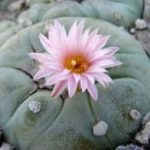
Peyote has been long employed by cultures throughout all of Mexico for its hallucinogenic properties. Although it has been used by Ancient civilizations, it also is used still today. When Europeans first came to the Americas, they were scared of Peyote and condemned it much like many of the drugs that are classified and scheduled today (along with Peyote). It has always had strong religious significance in its native regions and has been known to be used by the native Mexicans for thousands of years. Many tribes in Mexico believed it to be a divine plant. The tribes which employed it, understood it for its medicinal properties, as a spiritually “healing” herb, and for ceremonial use.
Sometimes, peyote can induce some pretty scary visions. For this reason, it has been frequently associated with hedonistic rituals and all sorts of superstitions. Many people who did not understand peyote and discovered it in the old world, felt that it was associated with the devil. The Spanish believed that the cactus allowed the native Indians to contact evil spirits or fulfill “diabolic fantasies.” Still, the cactus has been employed year after year, generation after generation, among sorcerers, medicine men, shaman, tourists, recreational users and tribes of all belief systems.
Many of the tribes which hunted for peyote, including those who still hunt today, begin the ritual when the hunt begins. The shaman leading the hunt will begin by telling all types of stories of the ancestors, the gods, and the plants that they employed or gifted this world. Most of the stories revolve around peyote itself. The rituals continue as the peyote is found and harvested, each ritual different from tribe to tribe and hunter to hunter.
No matter which tribe or person is harvesting the peyote, traditionally it is always handled with care and sacred regard. Many times there is praying, and sometimes there are even offerings (such as tobacco) which are burned in a fire before the cactus. The Indians whom traditionally harvested the cactus treated it as though it were literally a gift from the heavens. After it has been harvested, the ritual usually continues with a number of blessings involving incense and purification processes on the mescal buttons.
Sometimes the peyote is consumed at the end of the hunt on the spot, other times the hunt has been about much larger gatherings which will be consumed by a number of people back at home or elsewhere. Regardless of where the peyote is consumed the preparation is also intricate and almost always slightly different from culture to culture.
Mescaline is the magic alkaloid responsible for the hallucinogenic activity from the Peyote cactus. The mescal buttons provide chemical structure closely related to noradrenaline. The cactus provides strong visual hallucinations and is one of the most important psychedelic plants throughout all of history of the entire lexicon of psychoactive plants.
Conocybe Mushrooms
The mushrooms of the Conocybe genus are sometimes referred to as “flowers of the Gods”. Many of them are highly intoxicating, and also hallucinogens. In fact, it is possible to have strong visual hallucinations off of just a small dose for some species and all that is required is consuming the raw mushrooms themselves. Once again, much of the ancient world of whom utilized Conocybe mushrooms did so for religious or ceremonial purposes. They believed in many of these cultures that the mushrooms were gifts from the gods. The Spaniards are famous for rejecting all hallucinogens including the Conocybe mushrooms when they arrived in the Americas during their conquest. Many missionaries were set up and a core element of the teachings included rejecting hallucinogens. Many of the literature and propaganda of the time in the area relates to mushrooms and similar hallucinogens of the region being associated with the devil and evil.
No matter how much the Spaniards wanted the native Indians to reject and announce the Conocybe mushrooms, use would persist. Even today there are modern ceremonies throughout South America which involve ingesting Conocybe mushrooms for their hallucinogenic effects. Additionally, Conocybe mushrooms are used on a regular basis for recreation. Some of the most important hallucinogenic mushrooms include: Blue Meanies (Panaeolus cyanescens), Hoop-petticoat (Panaeolus sphinctrinus), Dark-rimmed Mottlegill (Panaeolus subbalteatus), San Isidro (Psilocybe cubensis), Wavy Cap (Psilocybe cyanescens), Teonanacatl (Psilocybe mexicana), and Liberty Cap (Psilocybe semilanceata). These magic mushrooms rely upon the powerful alkaloids psilocybine and psilocine for their hallucinogenic effects.
The Diviner’s Sage
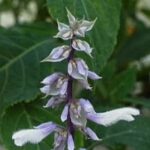
Diviner’s Sage, also known as “Salvia” (Salvia divinorum) is native to the South American countries. It was widely known and used by the Aztecs, and the shaman of the Mazatecs. And though it is most prevalent in Mexico, it was also used throughout many Central South American countries. It is a very powerful hallucinogen and the “trips” generally only last a few moments each dose. These strongly intoxicating, intense visual hallucinations are used very commonly for inducing visions, prophecy, and spiritual exploration.
Salvia possesses chemicals salvinorin A and salvinorin B, which are extremely coinsciousness-altering. Even small doses can provide wild visions and hallucinations that are fully immersive. The leaves can be chewed, but the most powerful effects come from smoking an extract. It has been a very popular drug in modern cultures, and thus has led to becoming scheduled (controlled, illegal) in many places, including the United States.
San Pedro Cactus
San Pedro is the second most powerful hallucinogenic cactus, and one of the most important hallucinogens throughout Earth’s history. They typically grow most heavily in South America, though can also be found in other desert regions of the Americas. They contain mescaline, which provides very visual hallucinations. Although it is not as strong as the Peyote cactus, it is most certainly the runner up, and definitely one of the strongest hallucinogens on Earth. The San Pedro cactus (Trichocereus) is one of the many psychoactive plants and hallucinogens condemned by the Spanish as evil, due to its ability to allow a user to enter delirium and communicate with the devil.
The Indians whom used the San Pedro cactus (and still do) have varieties of belief systems behind the origin of the plant, and why they use it. Many believe it is sacred, allowing them experiences of spiritual value, or information. Others believe it sincerely is a direct link to the gods. There are also recreational uses for the plant. And also witchcraft uses for San Pedro. It has been used for curing illnesses and healing (including curbing alcoholism and insanity), divination and prophecy, as a cleansing plant, and for all types of other needs and desires. Most users of the San Pedro cactus have a strong religious or spiritual belief and value in the cactus. And those who do not have a spiritual respect for San Pedro, often find it upon their first experience with the drug.
Hallucinogenic Vines of Serpent
The “Vines of the Serpent” are extremely pretty plants, blooming gorgeous flowers that are often attractive to own and employ in one’s garden. However, this is not the only place these vines are employed. They have been well-known and used as hallucinogens within many cultures for thousands of years. They grow in warm places but are very common in the Americas, specifically Central and South American countries. Morning Glory (Ipomoea) and Turbina (Ololiuqui) are strong hallucinogens, being administered many different ways depending upon the specific culture in time. There are many drinks that are concocted using extractions from these vines, some of which are highly intoxicating and have rapidly-forming hallucination effects.
These vines are some of the hallucinogens that the Spaniards condemned upon showing up during their conquest of the Americas. They were scared of the visions and ‘satanic-like’ rituals which surrounded the consumption of the plants. Though, the plants were employed for their hallucinogenic effects long before the Spanish arrived. Paintings and art exist all throughout cultural literature in the area, portraying the vines and their influence (and use) within the cultures. The Ipomoea and Turbina plants, particularly Ololiuqui, are excellent sources of Lysergic acid alkaloids. Thus, LSD is responsible as the active principle in providing the hallucinogenic plants. Psilocybe is also at play here.
Virola Epena, aka Ucuba Seeds
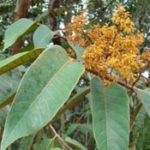
Unfortunately, Virola earned the nickname “Semen of the Sun” and also suffers a terrible story of inception. According to ancient folklore within the Tukano tribe of South America, Virola was achieved by the Father of all time, the Sun, making love with his daughter, Viho. Snuff is made from the seeds of Virola and it can be used to experience intense hallucinations and communicate with the spirit world. It is considered a sacred plant and used by shaman of the area…not just with the Tukano tribe, but also other tribes as well. The Bora and Witoto are among those other tribes, who choose to prepare the seeds into pellets which they then swallow (rather than the snuff which is sniffed in the Tukano tribe).
There are many drinks and other preparations which provide hallucinogenic effects including Virola, of which were well-employed and known throughout history for their intoxicating, inebriating effects. Although these drinks may have been documented, many of them only very recently have been associated and proven to contain Virola. Virola is a DMT-like hallucinogen and produces alkaloids: 5-methoxy-N,N-dimethyltryptamine, along with Dimethyltryptamine. There are other hallucinogens present in trace amounts as well. The regular use and strong historical employment of this drug, makes Virola one of the most important hallucinogens the world has ever seen.
Pituri Bush (Duboisia)
Pituri is one of the most important and known hallucinogens known to man. It has been used (most likely) longer than any other hallucinogen and has the oldest history. It has been proven that ancestors of the Aborigines used Pituri (by chewing it) more than 40 thousand years ago! Although Pituri bush can mean many things, it most commonly refers to the Duboisia hopwoodii plant, which is technically a nightshade. This plant is famous for inducing amazing dream states with super real-feeling, vivid hallucinations and visions. It has been used for visions, spirit walking, divination and recreation. The effects are strongly euphoric and stimulating. Weaker plants, extracts and concoctions may lack visual hallucinations, but only be stimulating; while the stronger of the pituri plants may provide intense hallucinations that many consider “life altering”.
Botanical Shaman’s Final Notes on the Importance of Hallucinogens
Man has always struggled with the unknown. And in the world man is forced to reside, there is a great deal of unknown to suffer. Due to man’s lack of understanding on a scientific basis of where all of origination began, and what happens to man after death, it is only natural a variety of solutions would manifest. Some of these solutions are religious, and others are more of a pseudo-biological kind of belief system. Regardless of what someone believes when they ingest certain hallucinogens, they are apt to experience many visual, audible, other types of anomalies which may force them to further question their existence, or provide them with greater substance for their existence. There is no doubt something special about each one of these plants and they all contribute to an altered sense of existence.

